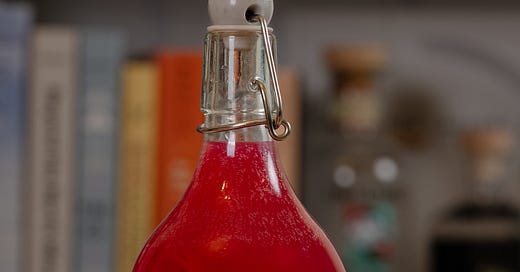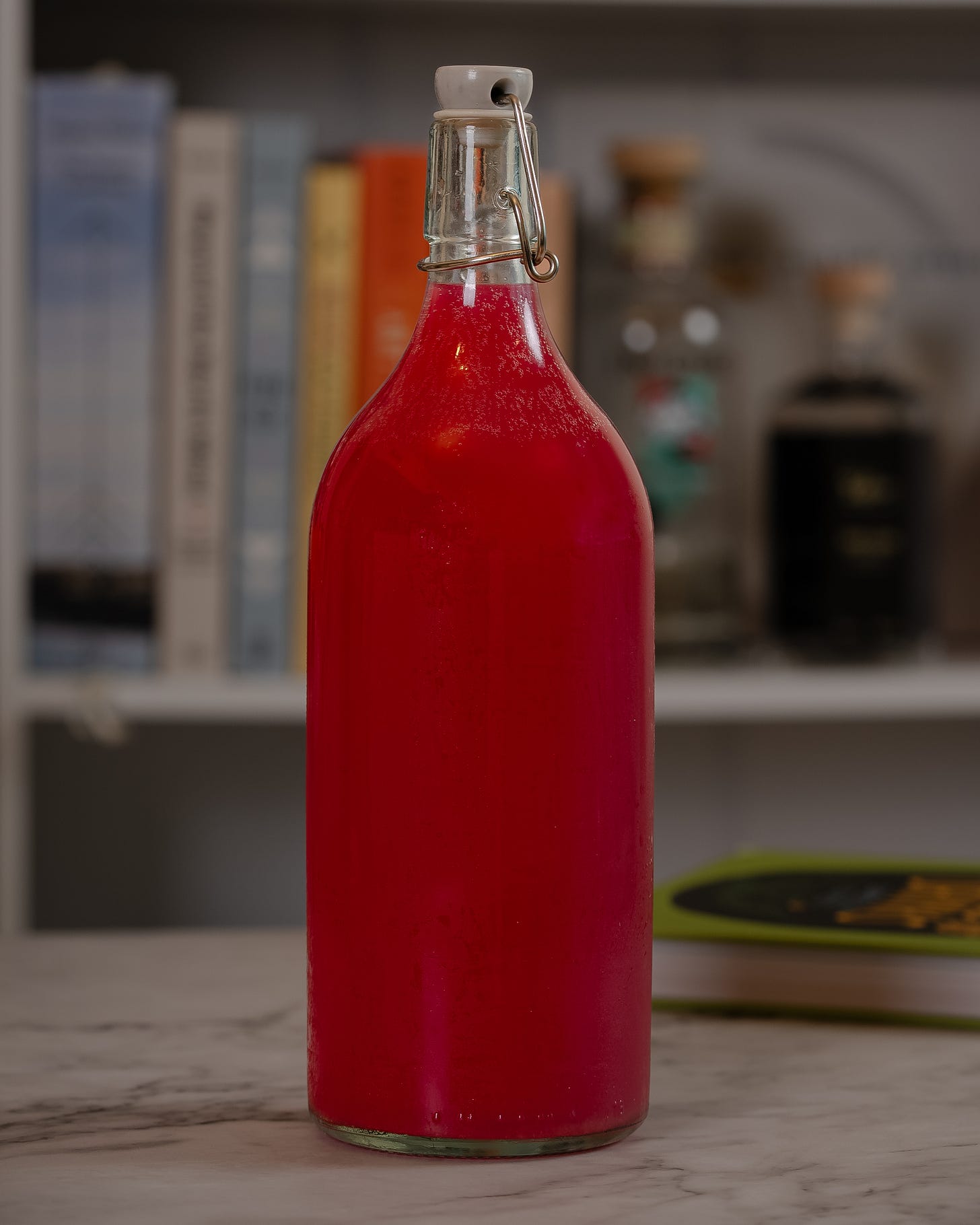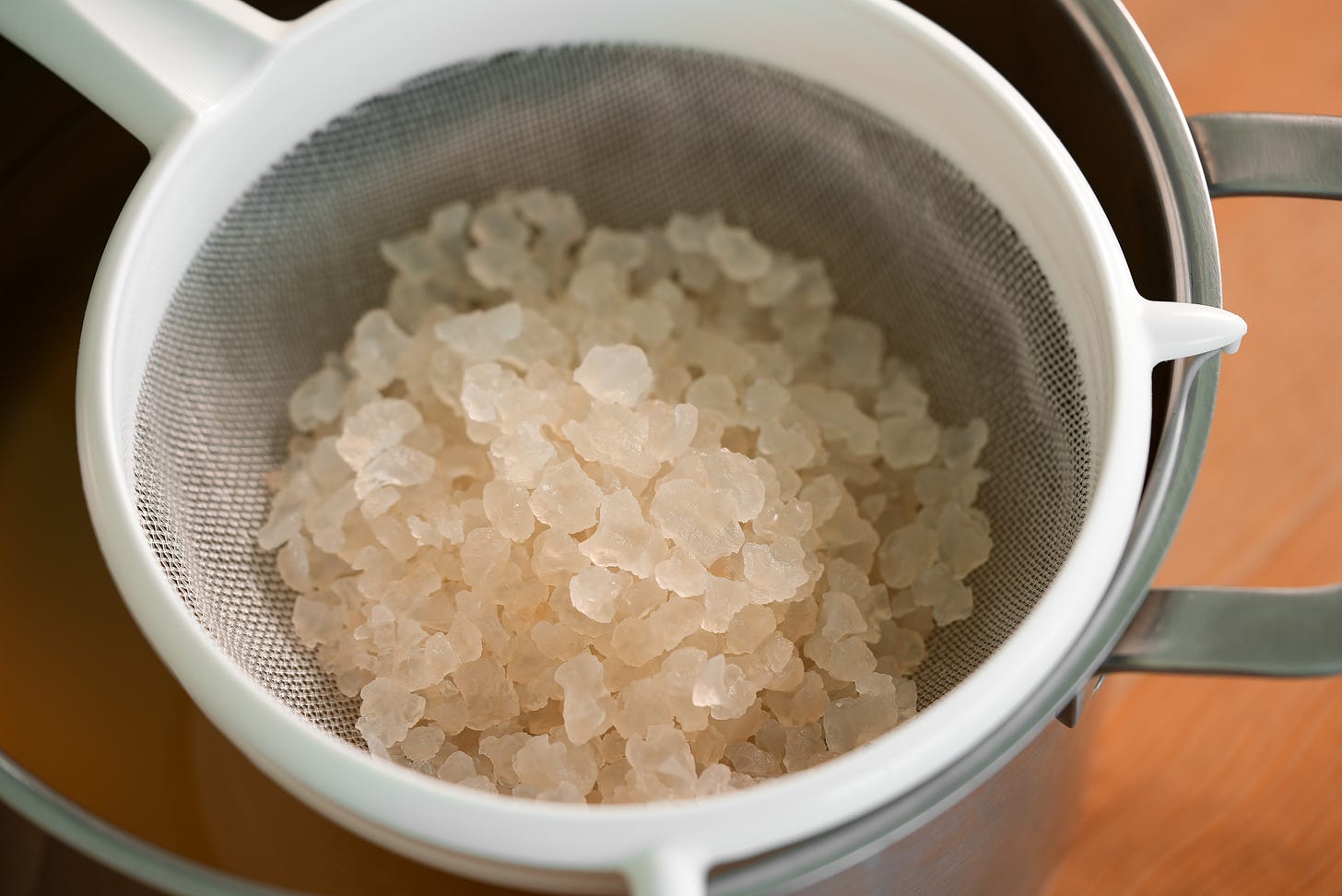Prickly Pear Water Kefir: A Vibrant Lacto-Fermented Soda
Discover how to make this naturally fizzy fermented soda and learn the secret to LAB-driven fermentation
Among all the fermented sodas I've experimented with, prickly pear water kefir stands out as a game-changer. Its vibrant fuchsia hue, subtle floral aroma, and crisp, effervescent finish make it one my favorite probiotic beverage.
For secondary fermentation, I rely on prickly pear purée—specifically Agrobar brand—for its rich flavor and ideal balance of sweetness and acidity, ensuring consistently excellent results every time. The 4:1 ratio of water kefir to prickly pear purée provides balanced flavor while maintaining proper fermentation conditions. The lactic acid bacteria (LAB) dominate in this slightly acidic environment (starting pH ~4.5 in secondary fermentation), producing that characteristic tang while keeping yeast activity and alcohol production minimal.
Understanding Water Kefir Fermentation
Water kefir grains are a symbiotic culture of bacteria and yeast (SCOBY), just like milk kefir grains, but with a key difference in their sugar preferences - while milk kefir grains feed on lactose, water kefir grains specifically consume sucrose. These grains are living cultures that grow slowly with each batch through proper care.
The fermentation involves three key processes:
Lactic acid fermentation driven primarily by Lactobacillus species that convert sugars into lactic acid, creating the tart flavor and lowering pH to 3.5-4.5
Limited alcoholic fermentation by yeasts like Saccharomyces, producing mild carbonation and trace alcohol (typically <1%)
Minor acetic acid production if fermentation extends too long
Optimal conditions:
Temperature: 20-24°C (68-75°F)
Initial sugar concentration: 8-10°Bx (100g sugar per liter water)
Fermentation time: 24-48 hours
Shorter ferments yield sweeter results, while longer ferments become more tart.
Microbial Differences in Water Kefir
Water kefir grains contain a distinct SCOBY (symbiotic culture of bacteria and yeast) profile compared to milk kefir. While both are microbial colonies, their bacterial compositions have evolved for different substrates:
Water kefir grains primarily contain:
• Lactobacillus hilgardii (sucrose specialist)
• Acetobacter species (acid producers)
• Saccharomyces yeasts (adapted to mineral water environments)Milk kefir grains feature:
• Lactobacillus kefiranofaciens (lactose-metabolizing)
• Leuconostoc species
• Kluyveromyces yeasts (milk sugar specialists)
This evolutionary specialization means:
✓ Water kefir thrives on sucrose (table sugar)
✓ Milk kefir requires lactose (dairy milk)
✓ Cultures cannot be interchanged
✓ Each grows only when fed its preferred sugar source
The grains multiply slowly (5-15% per batch) when maintained in ideal conditions.
Prickly Pear Water Kefir Recipe
Primary Fermentation
Ingredients:
20g active water kefir grains
1L filtered, chlorine-free water
100g raw sugar
Method:
Completely dissolve sugar in water
Add kefir grains
Cover with lid or breathable cloth secured with rubber bands
Ferment at 20-28°C for 48 hours
Strain out the grains
Readings:
Starting: 8-10°Bx, pH 5.5-6.5
Finished: 3-5°Bx, pH 3.5-4.5
Secondary Fermentation
Ingredients:
800mL strained water kefir
200g prickly pear purée (AGROBAR)
Method:
Combine ingredients in flip-top bottle
Ferment at 20-28°C for 48 hours
Refrigerate for 24 hours to develop flavor
Final Product:
2-5°Bx, pH 3.0-4.0
Store refrigerated up to 1 week
Troubleshooting Tips:
If too sweet: Extend primary fermentation time
If low carbonation: Ensure airtight seal in secondary fermentation
If yeasty flavor: Lower fermentation temperature to 20-22°C
This straightforward approach yields a consistently good, probiotic-rich water kefir with pleasant tartness and natural carbonation. The prickly pear addition creates a uniquely refreshing fermented beverage worth the minimal effort required.
connect with us on Instagram:
Denis Pashkov
cosmos society






